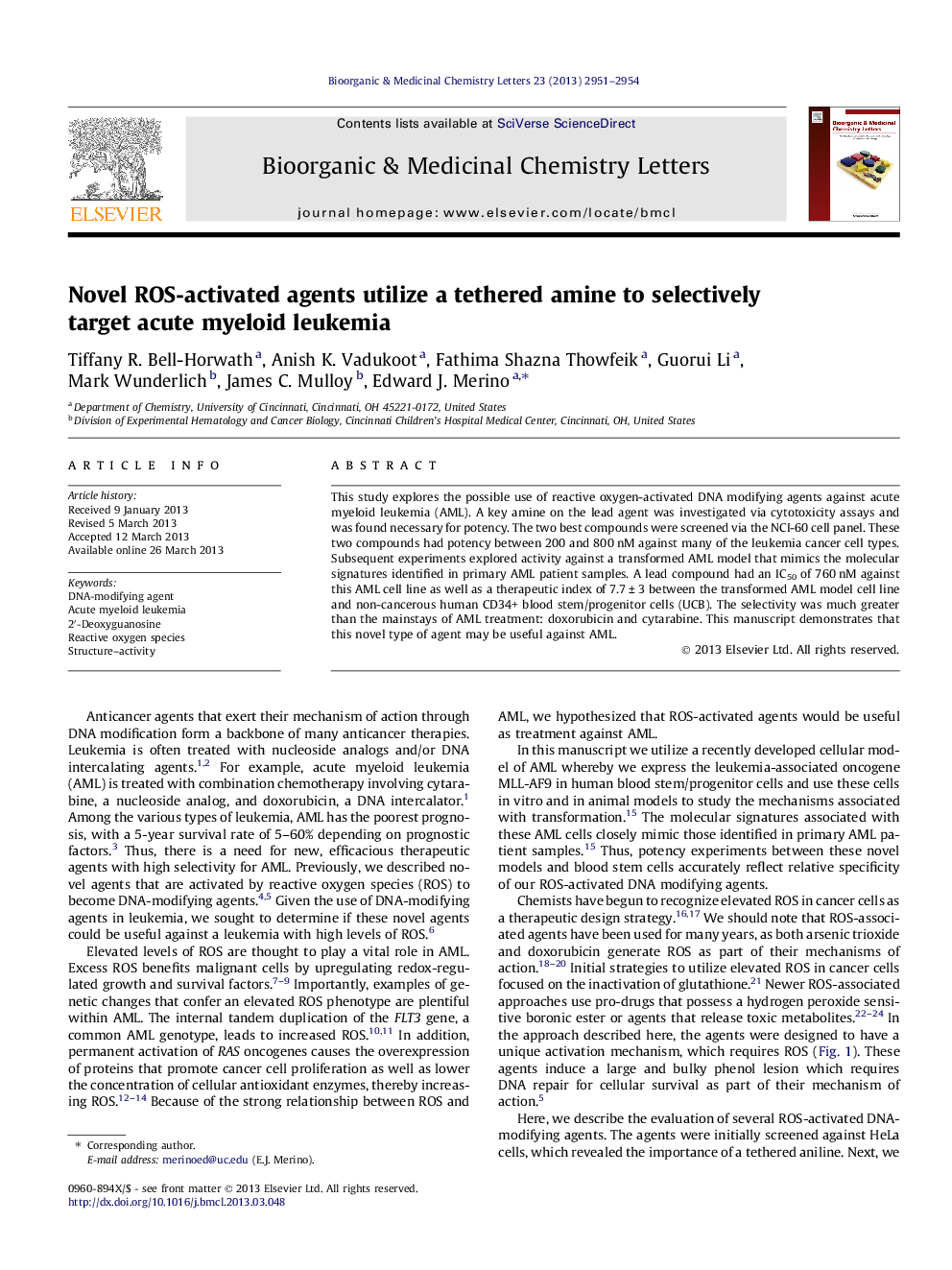| Article ID | Journal | Published Year | Pages | File Type |
|---|---|---|---|---|
| 10595857 | Bioorganic & Medicinal Chemistry Letters | 2013 | 4 Pages |
Abstract
This study explores the possible use of reactive oxygen-activated DNA modifying agents against acute myeloid leukemia (AML). A key amine on the lead agent was investigated via cytotoxicity assays and was found necessary for potency. The two best compounds were screened via the NCI-60 cell panel. These two compounds had potency between 200 and 800 nM against many of the leukemia cancer cell types. Subsequent experiments explored activity against a transformed AML model that mimics the molecular signatures identified in primary AML patient samples. A lead compound had an IC50 of 760 nM against this AML cell line as well as a therapeutic index of 7.7 ± 3 between the transformed AML model cell line and non-cancerous human CD34+ blood stem/progenitor cells (UCB). The selectivity was much greater than the mainstays of AML treatment: doxorubicin and cytarabine. This manuscript demonstrates that this novel type of agent may be useful against AML.
Related Topics
Physical Sciences and Engineering
Chemistry
Organic Chemistry
Authors
Tiffany R. Bell-Horwath, Anish K. Vadukoot, Fathima Shazna Thowfeik, Guorui Li, Mark Wunderlich, James C. Mulloy, Edward J. Merino,
